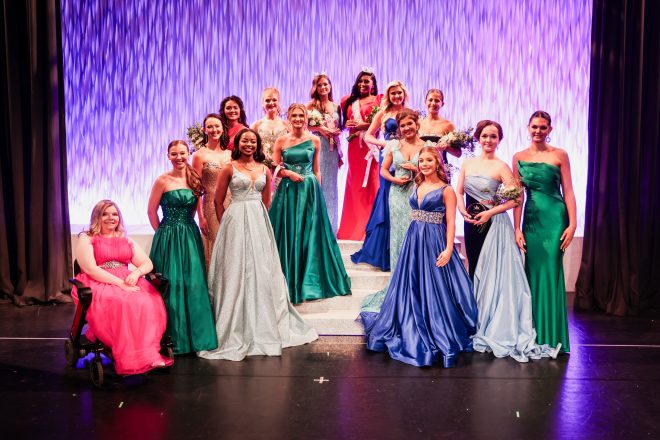Dwarf is a relative term in magnolias!
Published 12:00 pm Sunday, August 5, 2018

- Dr. Eddie Seagle
“This morning, the sun endures past dawn. I realise that it is August: the summer’s last stand.” -Sara Baume.
“August is that last flicker of fun and heat before everything fades and dies. The final moments of fun before the freeze. In the winter, everything changes.” -Rasmenia Massoud.
The genus Magnolia includes about 120 species with many hybrids and cultivated varieties (cultivars) whose flowers are often large with fleshy petals with ovoid-shaped leaves (some are glossy). Fragrance can be found in the bark, twigs, and flowers. These magnolias include southern magnolia, star magnolia (Magnolia stellata cultivars Scented Silver and Kikuzaki) and lily magnolia (Magnolia lilliflora) including such compact forms as Al’s Dwarf and Mini Mouse, as well as O’Neill with dark-purple flowers.
The southern magnolia (Magnolia grandiflora) is a magnificent fixture in southern landscapes and is native to the United States from North Carolina to Florida to Texas. Few trees can match its stately elegance. It can grow to heights of 80 feet or more with a 40-feet spread. This means large space areas are needed and many of our modern landscapes can’t accommodate a tree of such stature due to obvious space limitations. However, its huge, fragrant white flowers and large, oblong leaves make it a very desirable tree for the southern landscape. Thus, dwarf cultivars have been developed in the last few years that allow small landscapes to enjoy such a desirable tree.
Tree shapes include pyramidal, columnar and compact. Three popular varieties have pyramidal shapes like the native southern magnolia including Majestic Beauty (large tree), Samuel Sommer (large flowers, shorter trees), and Edith Brogue (most cold tolerant). The columnar shapes include such southern magnolias (specimen trees or flowering evergreen screens and hedges) as Hasse with a tight column, and Kay Parris (a smaller tree which is thought to be a cross between Little Gem (compact) and Bracken’s Brown Beauty. And the compact (dwarf) shapes (the smallest southern magnolias suited for smaller landscapes) include Little Gem, Baby Doll and Teddy Bear.
In the massive world of magnolias, dwarf is a relative term since 20 feet high would be the compact version of a 60 feet tall common tree. The important consideration is how and where the plant will be used. A 20-feet high compact form of southern magnolia might be a good choice as a street tree but a smaller tree would be needed in a small garden bed near the home.
Compact cultivars include Little Gem which can grow slowly upwards to heights of 30 feet and about 15 feet wide and flowers at a younger age than most magnolias. It is an evergreen with white flowers with an awesome fragrance. Little Gem tolerates most soil types in full sun to part shade. Little Gem can also be grown as a container plant with proper pruning for size control. Also, Baby Doll which is shorter and grows to about 22 feet tall and wide. Teddy Bear is another dwarf magnolia which can grow upwards to 20 feet tall and about 10 feet wide. Its growth rate is faster than Little Gem. Teddy Bear is a compact evergreen with white flowers preferring full sun in well-drained soil. Teddy Bear is not as cold tolerant as Little Gem but can be grown in containers in colder climates, as long as it is brought indoors during the winter months. And Baby Grand (Magnolia grandiflora var. STRgra) which was discovered in Australia. This evergreen offers a rounded form with large, fragrant white flowers. Plant Baby Grand in full sun as a specimen tree or group planting and water frequently. It can withstand moist soils that can be problematic for most other trees.
Regardless of size, shape, or cultivar, southern magnolias require similar care. They can tolerate varied light conditions from full sun to part shade and different soil conditions including sand, clay and loam. They are tolerant of most pests and diseases. Pruning is only needed when certain shapes are preferred, such as espaliered forms. Their roots extend further outwards than most trees, approximately four times the distance from the trunk to the drip line.
Magnolia stellata “Royal Star” grows 10 to 20 feet tall and produces large white, star-shaped flowers in early spring. Royal Star (a deciduous magnolia) prefers rich, well-drained soil in full sun, but can tolerate light shade. It blooms later in the spring which makes it a great specimen planting. You can also plant several of these small magnolias together in a group planting for a tall hedge.
Classified as a deciduous shrub rather than a tree, Magnolia “Ann” is cold hardy and grows 10 feet tall. Depending upon local climate, Ann may bloom from mid to late spring, producing a stunning display of purplish-red, chalice-shaped flowers. Ann may be used as a shrub planting or grown into full tree shape. Ann prefers an acidic, moist soil in full sun.
Think in terms of native and sustainable plants in the landscape. May this bit of awareness spark your desire to learn and ask questions, encourage you to further apply your gained knowledge, and bring you to further realize that environmental stewardship and sustainability should be at the foundation of all your home landscape activities.
Keep your hanging baskets and potted plants refreshed with water and food. Remember to feed and water the songbirds, and to provide your pets the care they need (protect them from this extreme summer heat and humidity). Also, be on lookout for children playing and bicyclists riding along the streets and roadways throughout our communities. And remember to safely share the road with motorcycles. Drive alert and arrive alive. Don’t drive distracted or impaired, and don’t text while driving. Buckle up (click-it or ticket). Let’s keep everyone safe and secure! Help those in need and the homeless every chance you get. And, as you receive good deeds, always pay them forward. Pay for a stranger’s meal the next time you are eating out!
“You are my refuge and my shield; I have put my hope in your word.” Psalm 119:114. “Do not merely listen to the word, and so deceive yourselves. Do what it says.” -James 1:22.
Seagle is a Sustainability Associate, Golf Environment Organization (Scotland), Agronomist and Horticulturalist, CSI: Seagle (Consulting Services International), Professor Emeritus and Honorary Alumnus (Abraham Baldwin Agricultural College), Distinguished Professor for Teaching and Learning (University System of Georgia) and Short Term Missionary (Heritage Church, Moultrie). Direct inquiries to csi_seagle @yahoo.com.





